The Old Masters inspire the art
of a contemporary photographer
In 2007 the Dutch photographer Suzanne Jongmans decided to start a dialogue with the inspiring images of the great masters of painting, her beloved Rogier van der Weyden, Jan van Eyck, Rembrandt, Vermeer and Piero della Francesca.
She began an astonishing contemporary reinterpretation of famous paintings
using the most unusual elements to dress her revived characters.
Kindred Spirits. The Receptive Mode
Printed on Canson Fine Rag paper, 65×85 cm
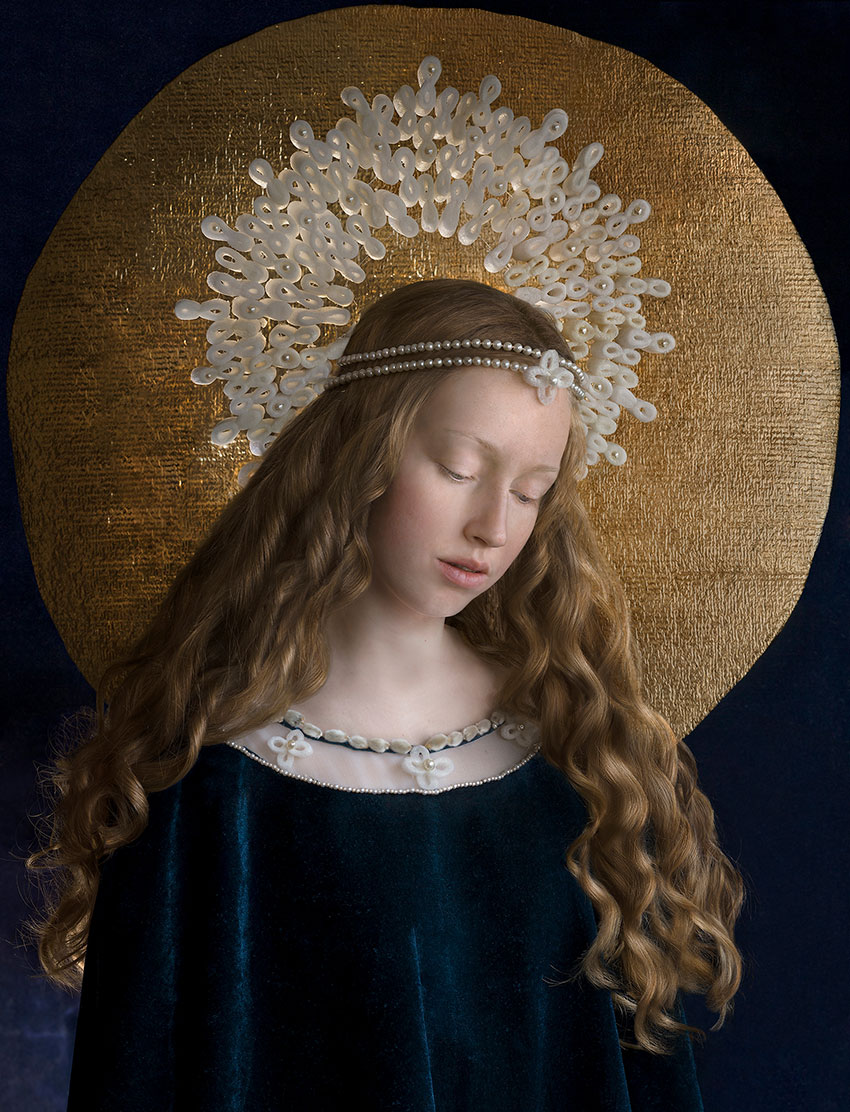
Julie. Portrait of a Woman
Printed on Hahnemühle paper, 60×75 cm
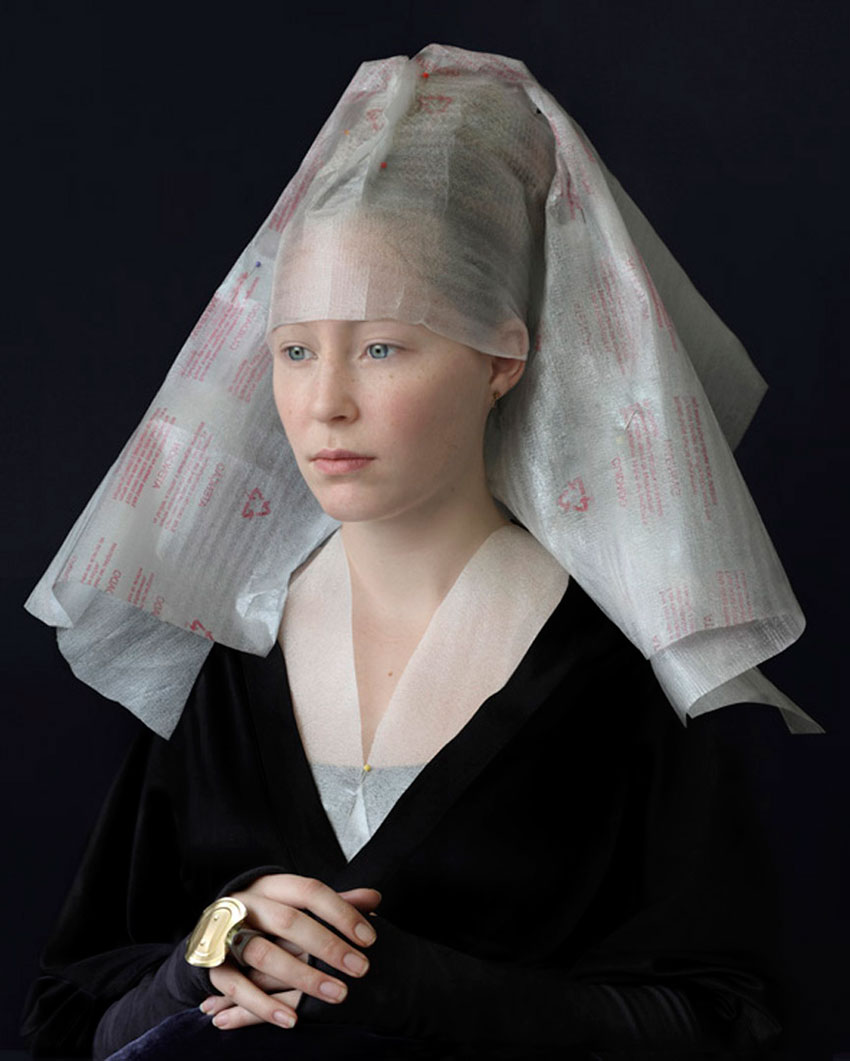
Mind over Matter. Room for change
Printed on Hahnemühle paper, 75x95cm
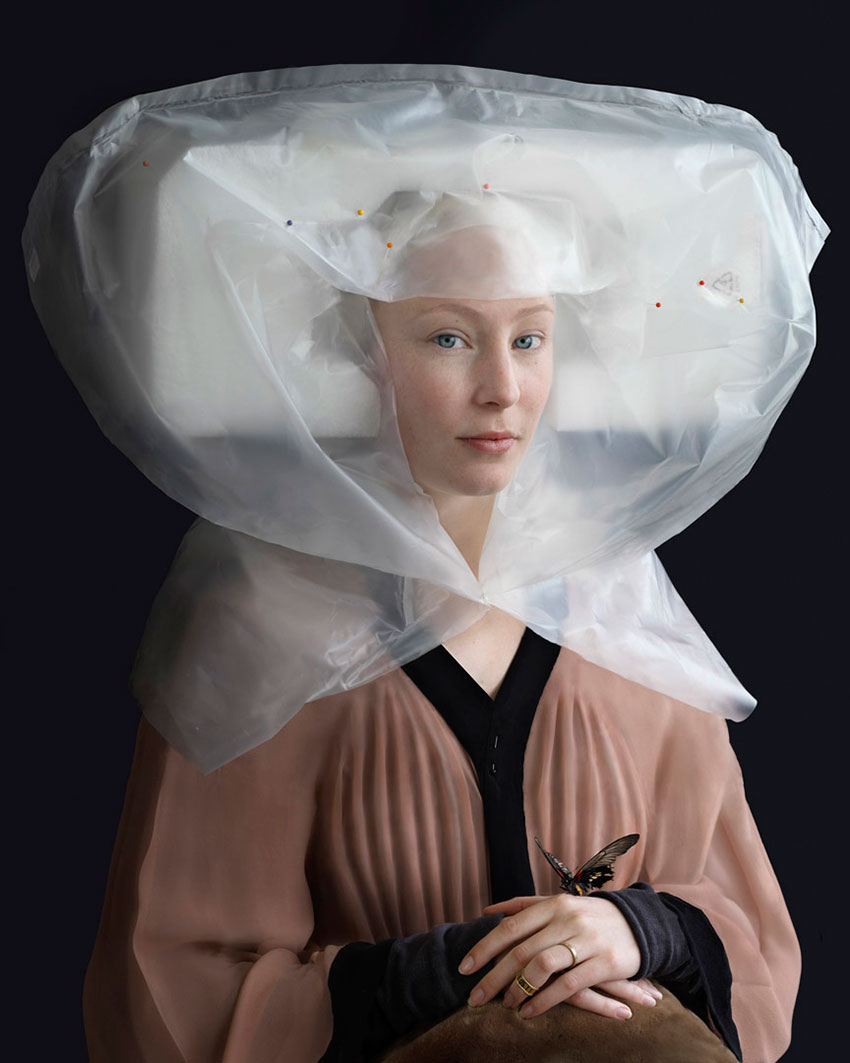
How does Suzanne perform
this astonishing Trompe-l’oeil?
Only by looking closely at the images can you discover that the veils are modern synthetic materials and use other fabrics and recycled elements.
Using friends and other people as models, Suzanne dresses them in clothes that she personally makes, and she also does hair and make-up, reinterpreting the styles and fashions of the 1400-1600s. Without a doubt Suzanne is a complete artist who masters all the details of composition.
You can feel the sensation of seclusion of the models
Suzanne masterfully recreates in the models the original spirit of the characters in the paintings of the time that were made for religious purposes.
Mind over Matter. Gratitude
Printed hahnemühle paper, 90×112 cm
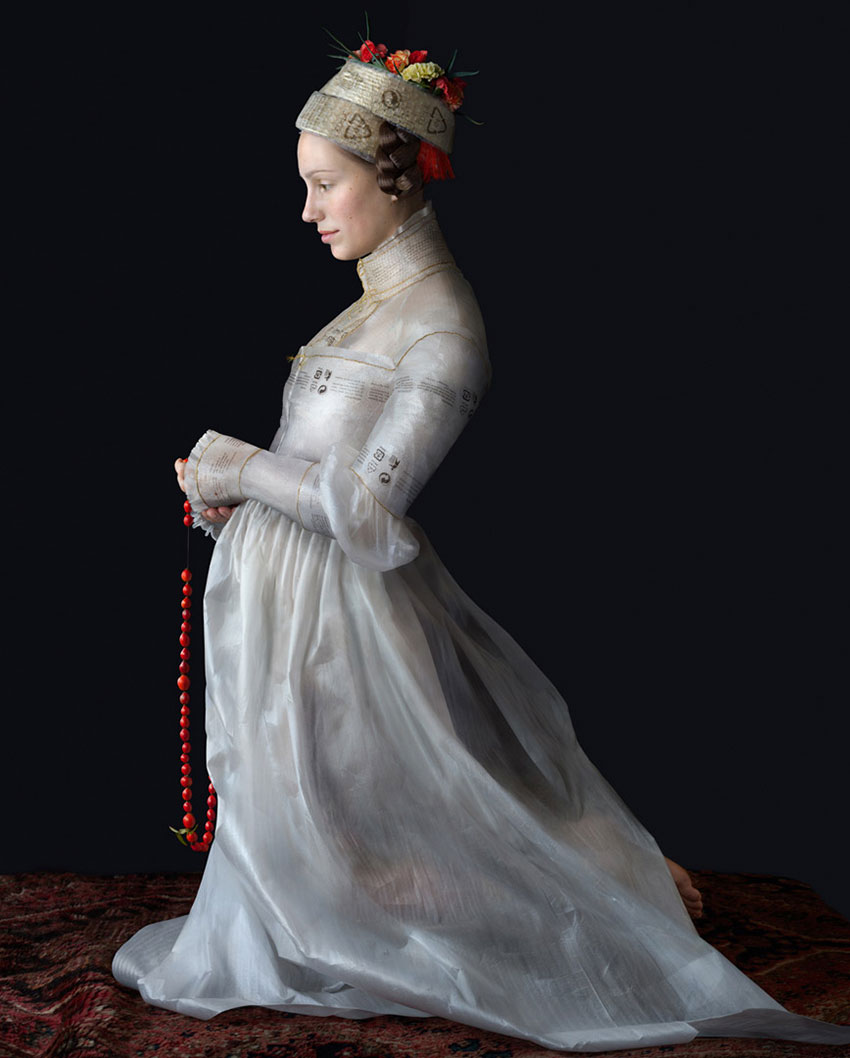
Mind over Matter. Closure
Printed on Hahnemühle paper, 60 x 75 cm
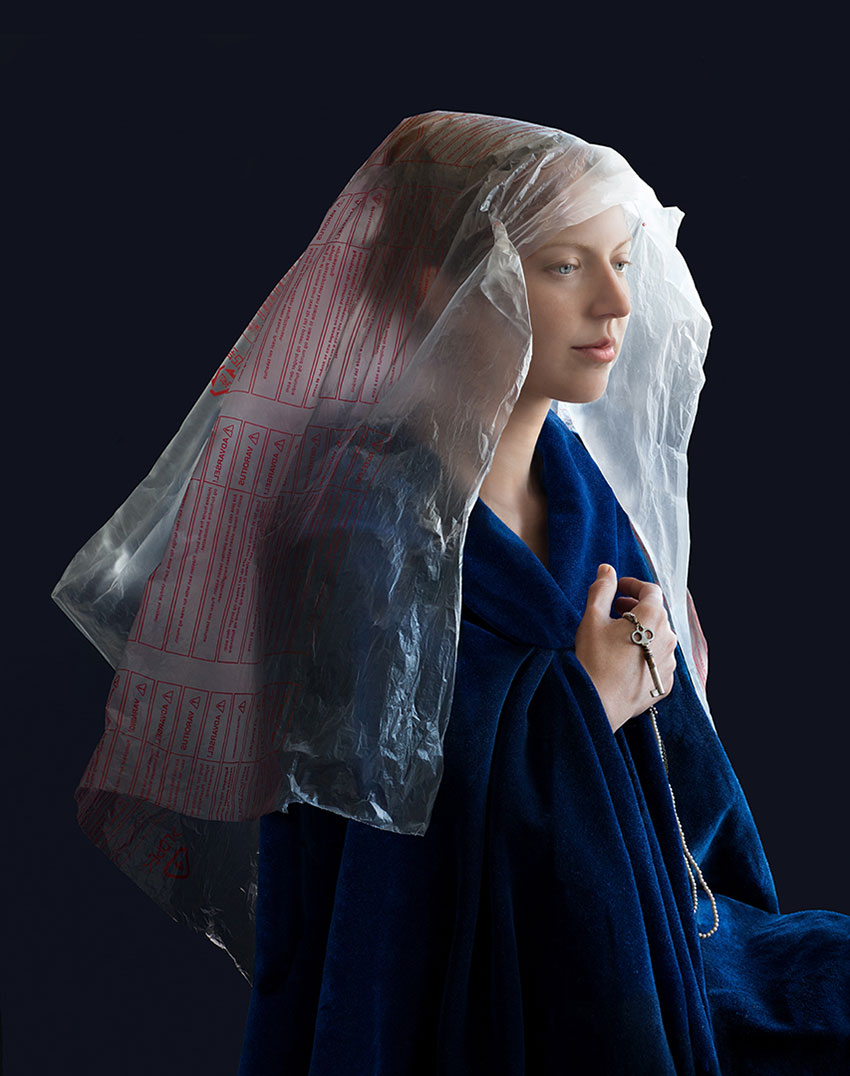
Mind over Matter. Solitude
Printed on Hahnemühle paper, 75×95 cm
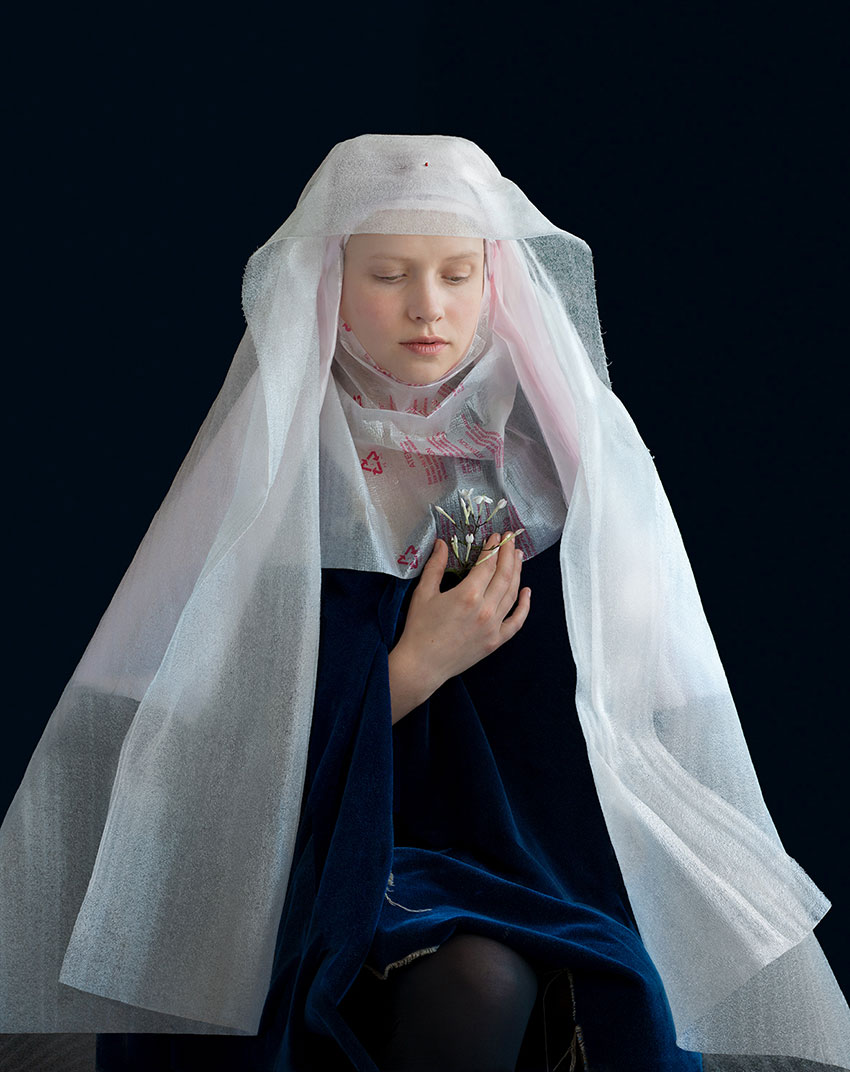
Kindred Spirits. Confronting Love
Inkjetprint on Canson Platine, diasec; matte acrylic front, 200×150 cm
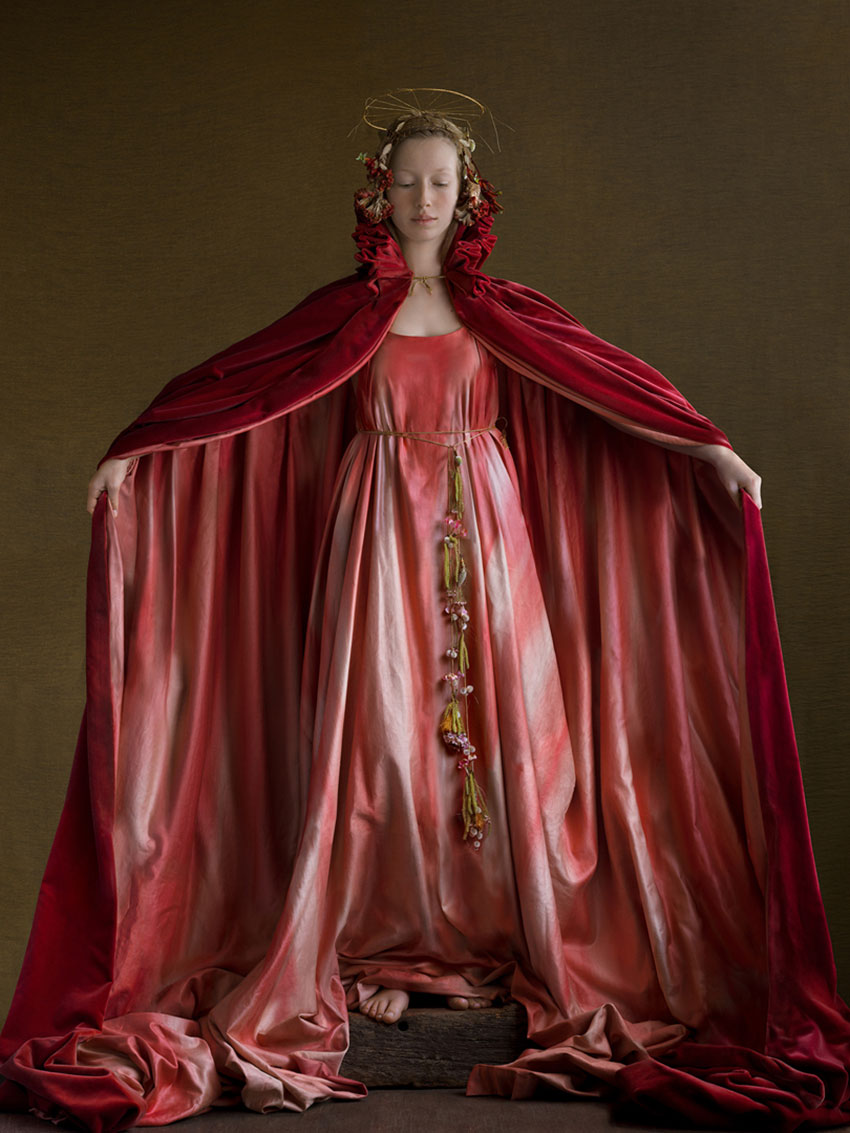
Kindred Spirits. Transcendence
Printed on Hahnemühle mounted on dibond in walnut baking list, 150×45 cm

Suzanne’s passion for details, in the details of the composition of her photographs one can recognize Suzanne’s deep knowledge of the painting of the great masters.
Love is in the details #3, (from Kindred Spirits. Confronting Love)
Inkjetprint on Canson Platine with matte acrylic front, 30×19,5 cm
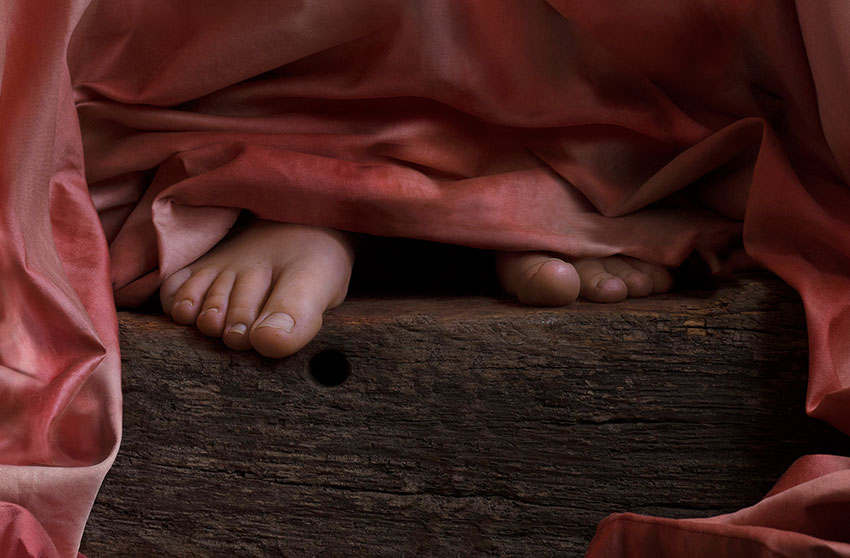
Love is in the details #2 (from Kindred Spirits. Transcendence)
Inkjetprint on Canson Platine with matte acrylic front

Love is in the details #1 (from Prince Jonah)
20×19,5 cm, inkjetprint on Canson Platine with matte acrylic front
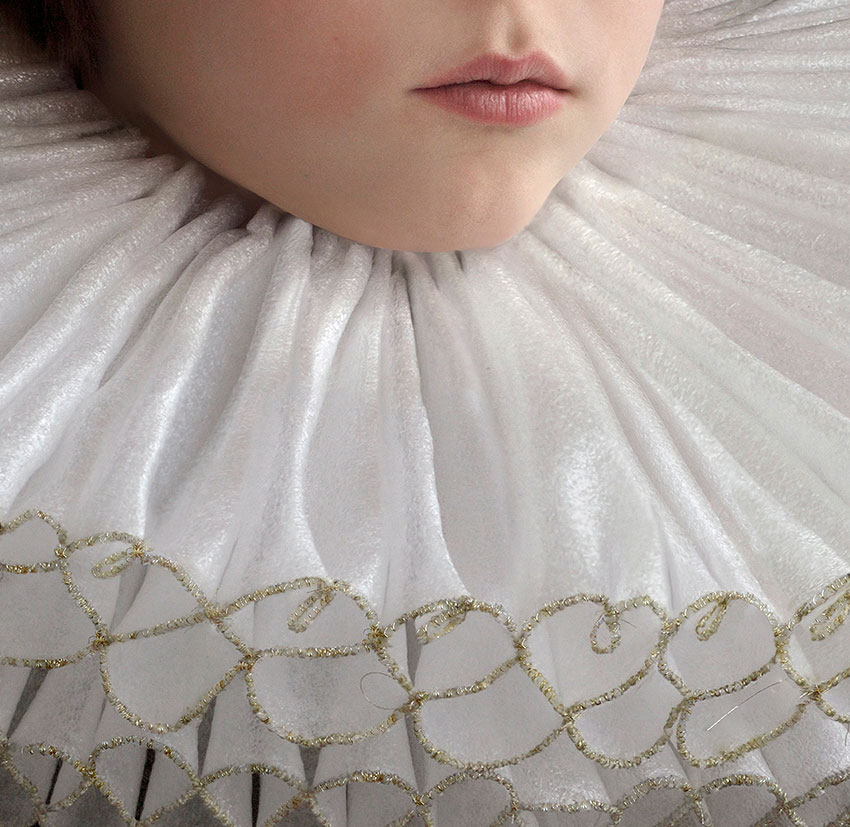
Renacentist and Baroque Children
If there’s one thing that’s very difficult in photography, it’s taking pictures of children taking a role. Suzanne’s photographs overcome this difficulty and achieve authentic psychological portraits of the children.
Princes Eva
Printed on Hahnemühle paper, 75x95cm
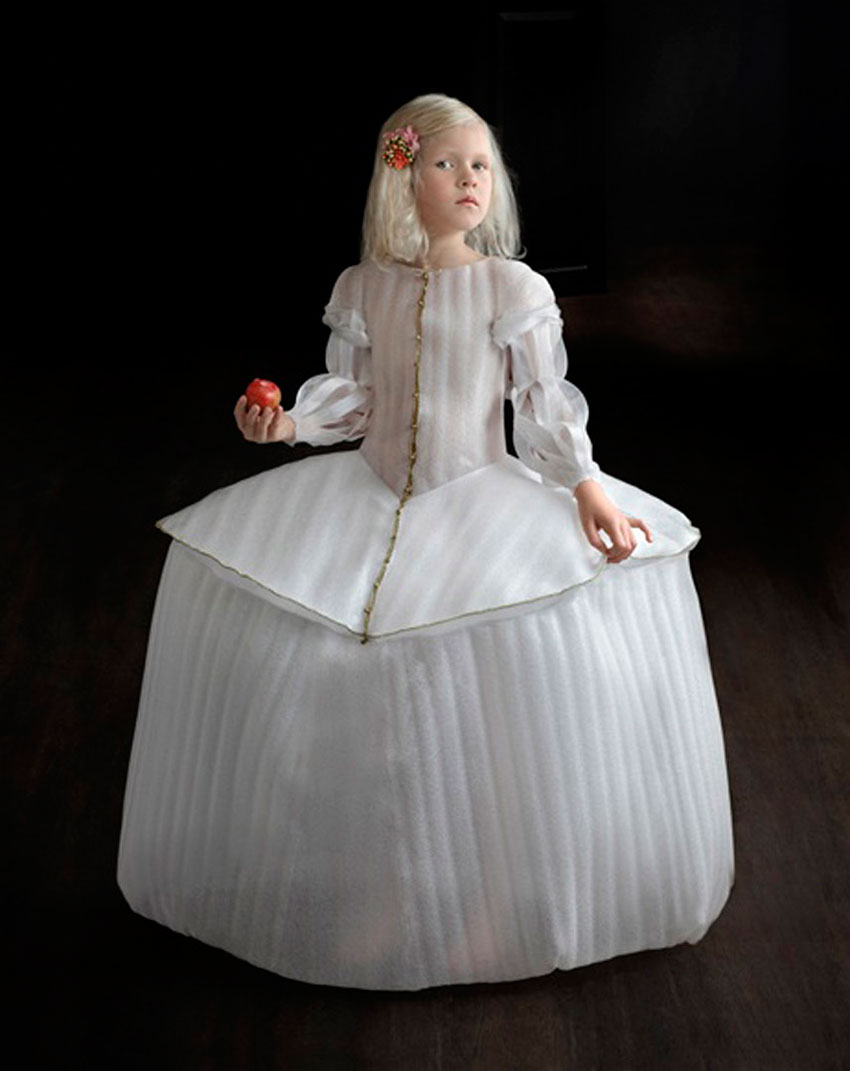
Prince Jonah
Printed on Hahnemühle paper, 60×75 cm
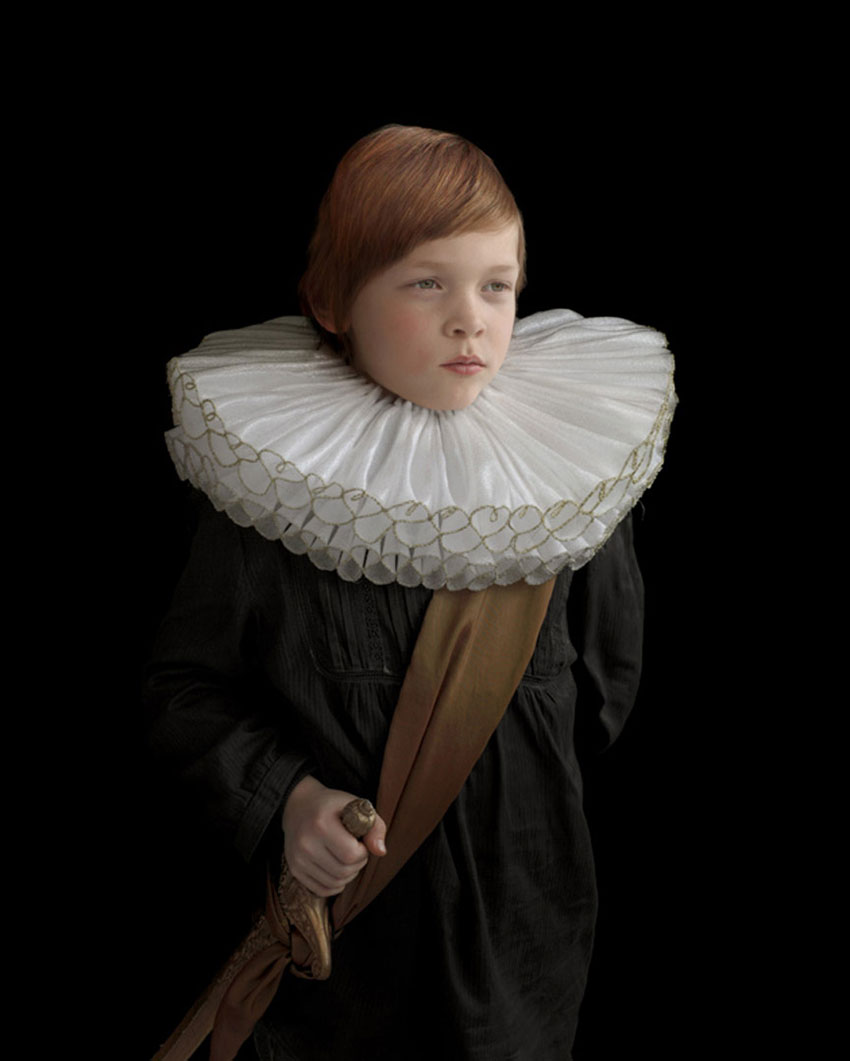
The Promise
Printed on Hahnemühle paper, 40x40cm
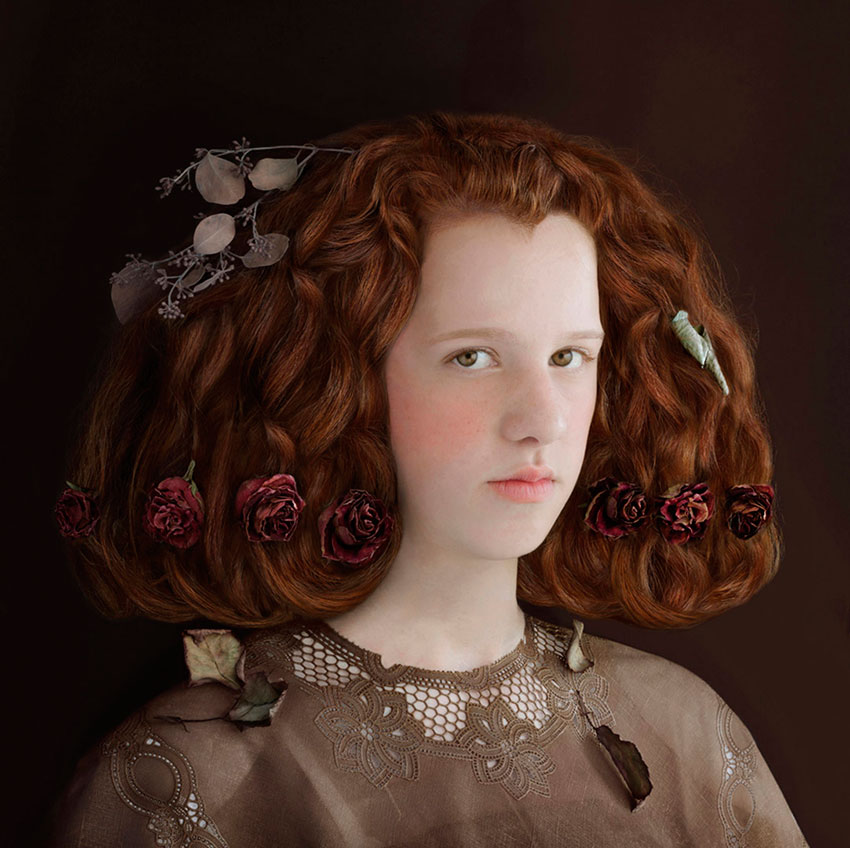
Kindred Spirits. Childhood
Printed on Hahnemühle paper, 60×75 cm
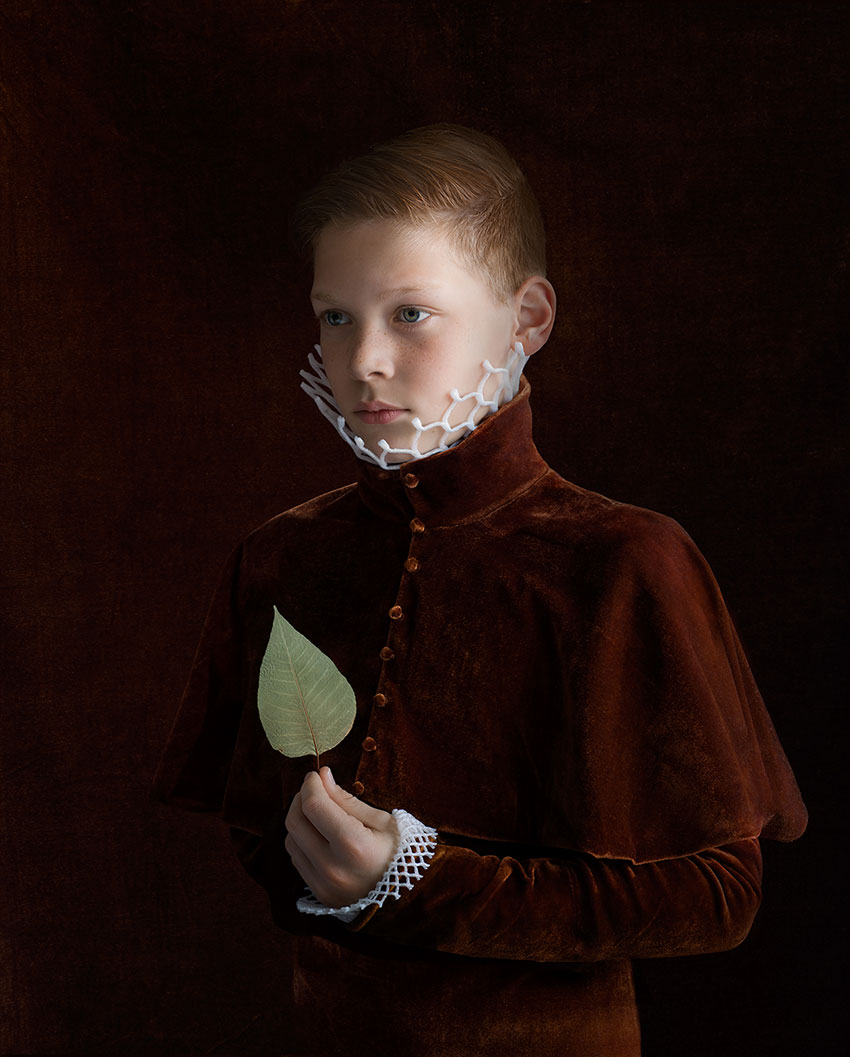
Kindred Spirits. Moving through contrast
Inkjetprint on Canson Platine with matte acrylic front, 140 x 115 cm | 115 x 95 cm
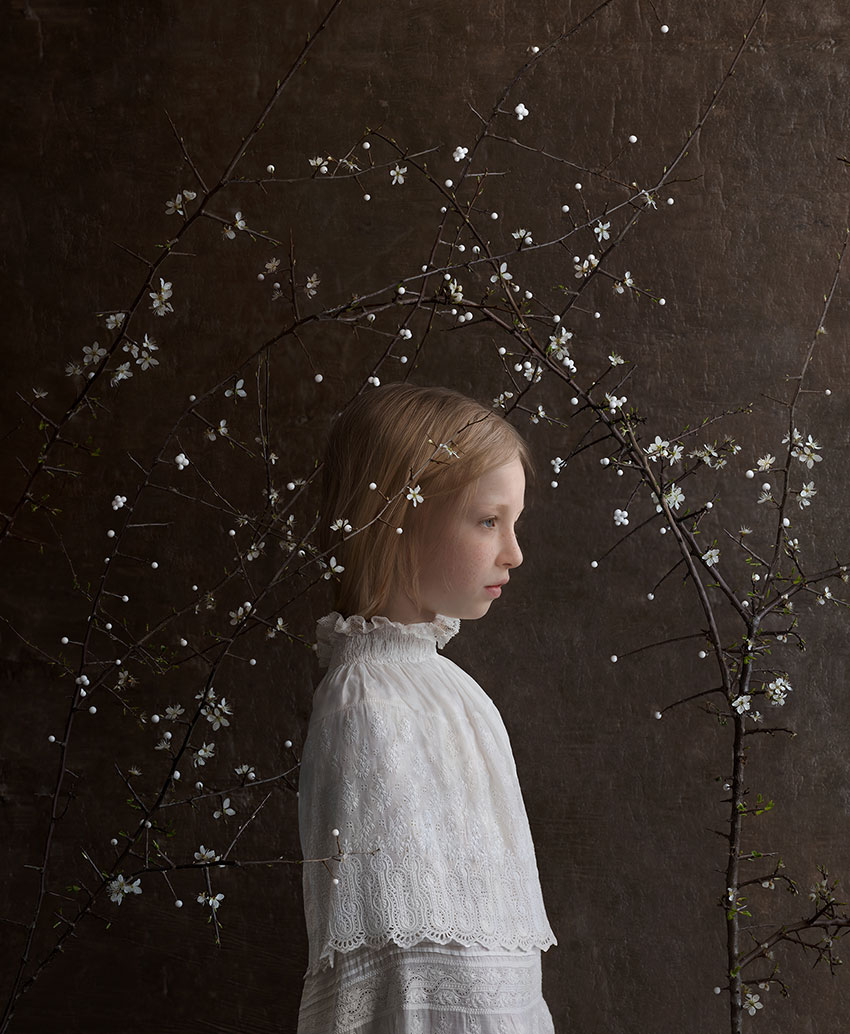
Owen the dialogue
Printed on Hahnemühle paper, 75×95 cm
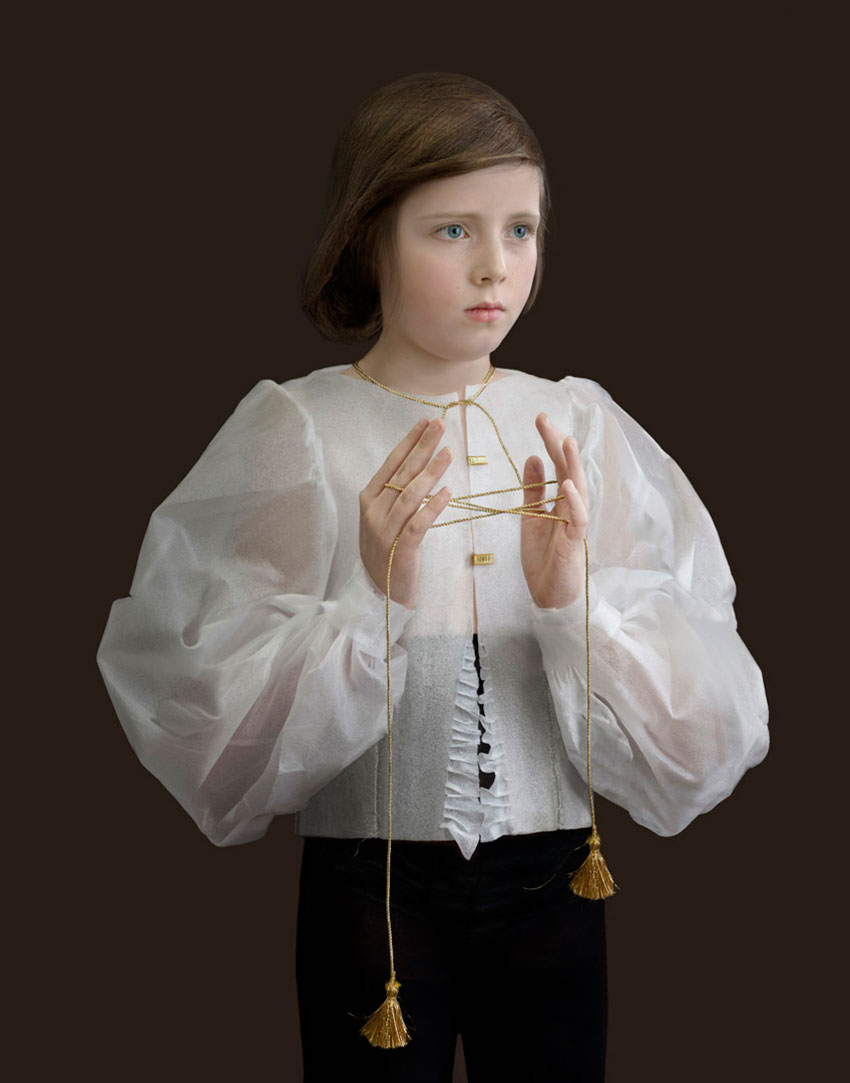
Kindred Spirits. Familial Patterns II
Inkjetprint on Canson Platine, diasec; matte acrylic front, 50×60 cm

Song of Pearl #1
Print on Hahnemühle paper, 75×95 cm
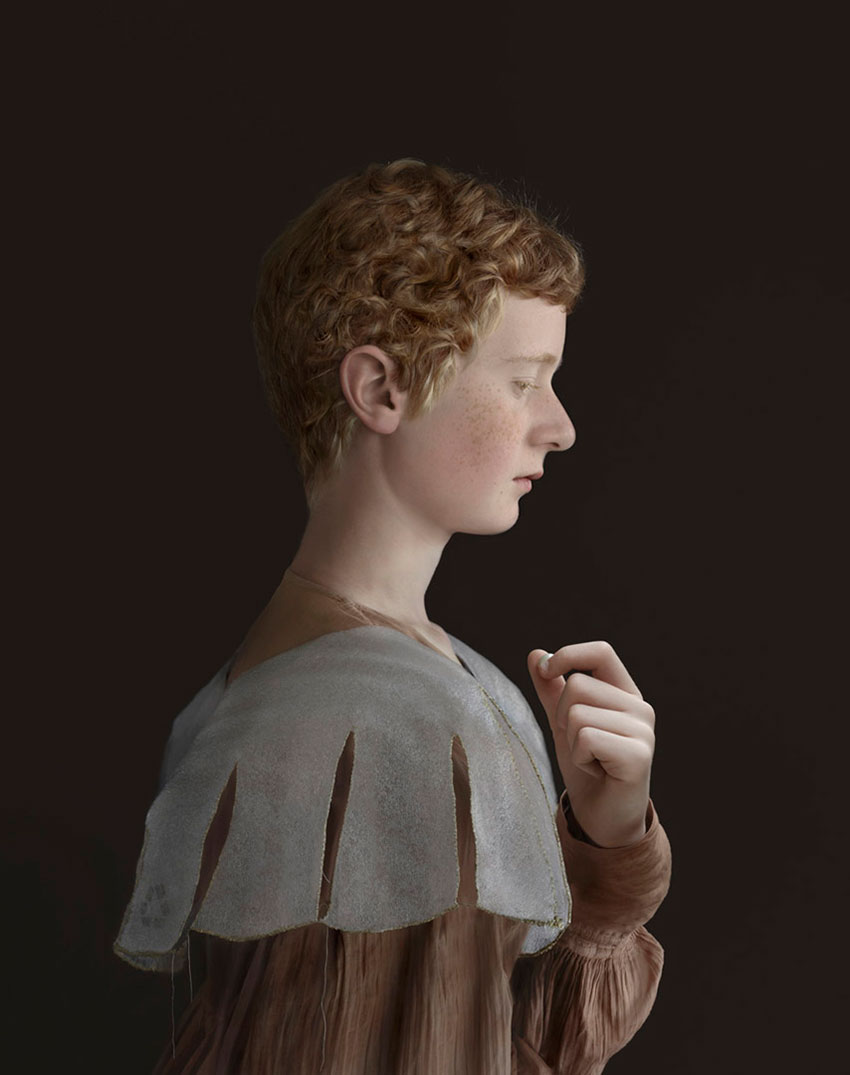
Kindred Spirits. Our Kingdom
Inkjetprint on Canson Platine, diasec; matte acrylic front, 40×50 cm
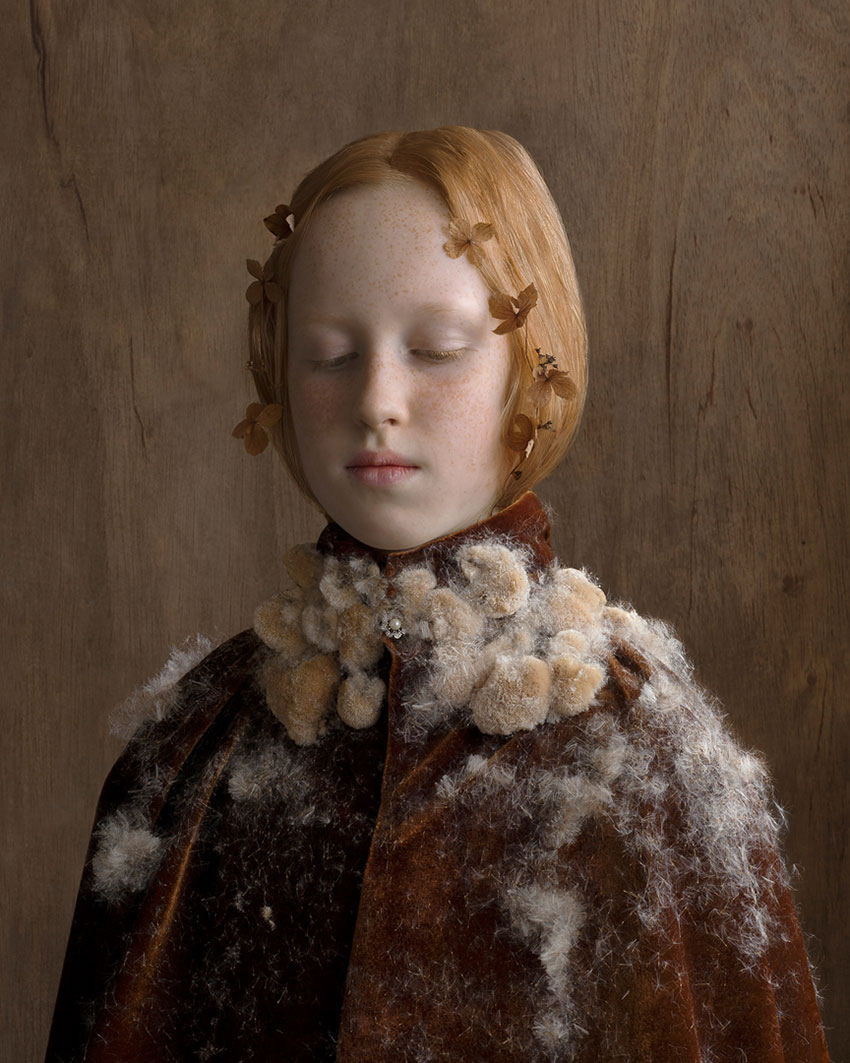
Madonna by Suzanne Jongmans
Mind over Matter. Origin
Printed on Hahnemühle paper, 60 x 75 cm

STATEMENTS
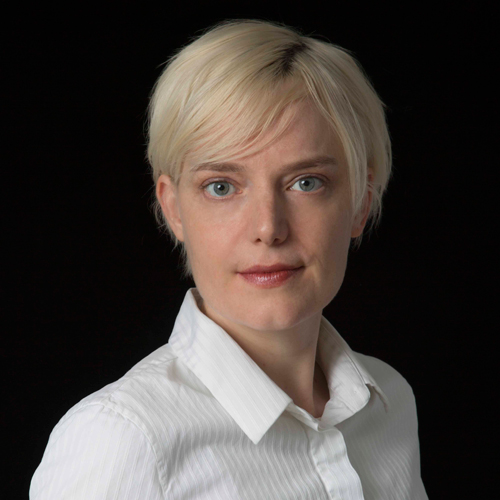 Karen Van Godtsenhoven
Karen Van Godtsenhoven
Associate curator of the Costume Institute
at the Metropolitan Museum of Art (New York)
‘She creates a tension and a meeting between the classical and the modern, the constant and the fugitive. Her images radiate an immanence, through the mundane scraps, we glimpse the divine.’
![]() ‘Dutch artist Suzanne Jongmans creates photographs that echo the old masters, but with a modern twist’
‘Dutch artist Suzanne Jongmans creates photographs that echo the old masters, but with a modern twist’
CATALOGUE
MOVING THROUGH CONTRAST
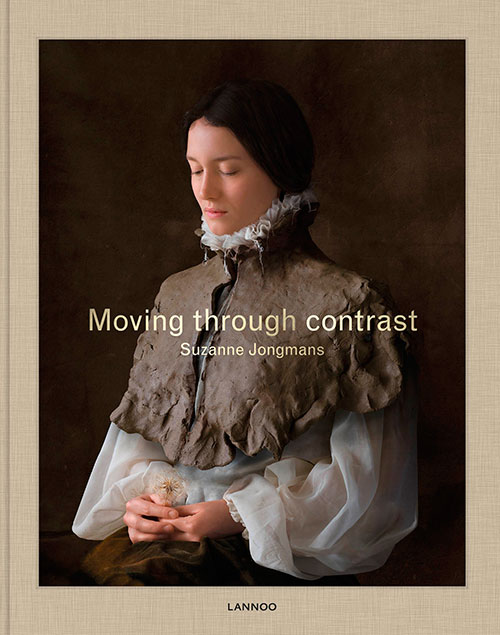 Authors:
Authors:
Karen Van Godtsenhoven,
Anneke van Wolfswinkel
Hardback
Pages: 192
illustrations: 180
Lannoo publishers
25 x 31 cm
€55
Buy it through:
https://www.suzannejongmans.nl/book
The ‘menina’ of Velasquez, Arnolfini’s pregnant wife in the Van Eyck portrait, and Rogier van der Weyden’s veiled ‘lady’: Suzanne Jongmans brings them to life in her photographic portraits.
This nod to the old masters of the 15th, 16th and 17th centuries – certainly also to Rembrandt and Vermeer – is only one aspect of her work. It is all about tranquillity, timelessness, beauty. Qualities she discovers even in disposable material such as packing foam and tin, with which she meticulously designs the exquisite costumes for her models – a subtle critique of our consumer society. And so layer after layer accumulates in her oeuvre, contrast after contrast. Between classic and modern, light and dark, life experience and childlike innocence.
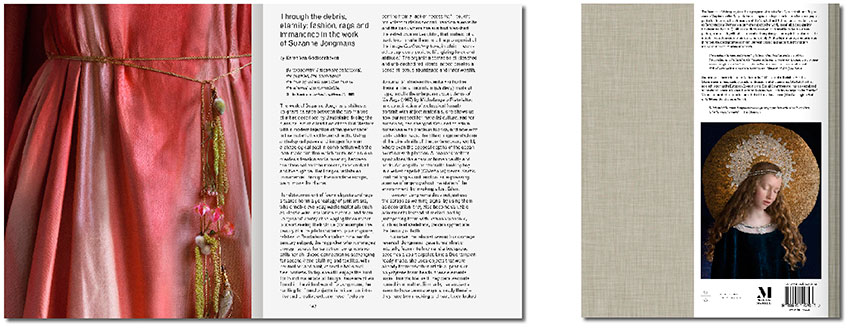
About Suzanne Jongmans
A profile of the woman and the artist, a story that captivates
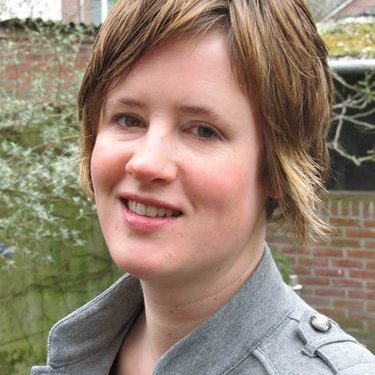 Text by
Text by
Anneke van Wolfswinkel
Within the walls of the studio is an infinite freedom. Here, Suzanne Jongmans surrounds herself with things that catch her eye, discovered at flea markets, in the forest or simply on the street. A pearl necklace, a branch shaped like an antler, an upside down wine glass with a spherical foot, reed plumes bursting into downy fluff. From the ceiling hang a child’s dress, coats and ruffs, silent as dreams, sculpted from transparent sheets of packing foam. Traces left behind by work from the past mingle with objects that might find their way into new images.
The window is thinly coated with white lime to filter incoming daylight, the only source of light she uses when she takes her photographs. Many of the objects she includes in her photographs embody the dual meaning of the word ‘light’: they weigh next to nothing and are a particular shade of white. Bubble plastic, dandelion puffs, a ruff crafted from polystyrene, the curves of a lemniscate, the petals of a hortensia withered to translucent skeletons.
The two-fold meanings of ‘light’ each have their own opposite. Clay is both: dark and heavy. In Lightness of Being this clay presses on the shoulders of the woman, who is dressed in a white, almost weightless fabric. The downy head of the dandelion in her hand is light and free. It carries the germ of a new beginning.
Space to be free
As a child, Suzanne often retreats into her own world. She plays outside or draws and crafts in her room. She also needs that world of her own, finding her way in a family of five, with a younger brother who is a constant source of concern because of his autism. Autism also makes contact with her father more difficult, and her parents break up when Suzanne is eight years old. Her mother raises her and her brothers, whilst also holding down a job. As a middle child able to take care of herself, Suzanne picks up on all these tensions without fully understanding what’s going on. When she creates something, she feels at ease, she feels free.
Another point of rest during her childhood is the home of her maternal grandparents who live nearby, in the village of Hoeven in Brabant where she grows up. On school days, she walks over to their house for lunch during the break. These people, who have transferred their farm to their son, are so comfortable in each other’s company they have little need for words. Her grandmother expresses her love in hugs that are so firm they almost hurt. Everything she touches with her hands becomes colourful and soft: she crochets rugs and coverlets for beds, tables and chairs, makes clothes and curtains. She gives new life to broken clothes pegs, as decorations for a knitting needle case: from her grandmother Suzanne learns that even the most banal objects have the potential for transformation and beauty.
Later, when she has completed her training as a visual artist, Suzanne sees this unsuspected beauty in packing materials. Styrofoam blocks used to pack a new television in its box become a headdress, the lengths of translucent foam become a millstone collar, trimmed with gold filament. An old black yoga mat becomes armour plating. Rose hips transform into the beads of a rosary, the ring-pull lid of a tin of tomato puree a precious ring. When Suzanne discovers the artistic potential of packaging materials in 2007, her work gains momentum. Every element that holds meaning for her coalesces in the series Mind over Matter: the serene portraits of Old Masters such as Hans Holbein and Jan van Eyck that entranced her as a child, the love of handicrafts she inherited from her grandmother, the artisanal slowness of the making process. There is a welcome ambiguity in that packaging material: a disposable material with no intrinsic value which now reveals itself as an exquisite, elegant textile. Intended to protect and yet innately fragile. In her photographs, the white of the ruffs and caps contrasts clearly against a shadowy background. For her, this contrast between light and dark is redolent with meaning. It is precisely in the dark that light shines brightly; by experiencing pain and sorrow, you feel joy more intensely.
The quality of the work is noticed by the public and the critics. Yet that appreciation is precisely what makes Suzanne restless. She feels that holding fast to the materials and motifs she chose in complete freedom ultimately leads to lack of freedom. If she continues the work with which she is successful, because others expect it of her, she risks drifting away from herself. With the work Closure she deliberately concludes the series Mind over Matter and contemplates new pathways.
In this time of new beginnings, her son is born. For the birth announcement card she photographs a bird’s nest she has found: a finely woven mesh of grass and twigs with here and there a wisp of blue cotton and even a few pieces of nylon thread. The nest reveals something of the change in her life. She can no longer devote all her time to her work: her child needs her, and on a much deeper level. The balance between work and life, between studio and home, must be redrawn.
In 2015 she photographs herself, adorned with a crown of lilies and tulips, cradling her infant son. As if in a cocoon, both are protected by a veil of diaphanous insulation foam. It is one of the first photos in the new series, Kindred Spirits.
She is always in search of space and yet sooner or later once that space is found, it becomes confining. The studio is such a space where she feels completely free—but gradually, the longing to live fully and freely outside of it, grows. The packing material she uses offers seemingly infinite possibilities but the success it brings her, and the expectations that ensue, become a cage that robs her of her freedom. To break free of that cage she takes a rigorous decision: she stops making portraits. No more faces, no garments, even the packaging material is abandoned for a while. It’s time to recalibrate.
Live lighter
She decides to make still lifes, regardless of whether people are waiting for it. She pays tribute to the tactility of the materials she loves so much. In the series Still Here she lets objects come to the fore, without being subordinate to a portrait. She shakes off the old husk of habits she has mastered and returns to what attracts her spontaneously. She craves the creative freedom she had as a child, and for the playful, associative way she worked at the academy. As a student, she made spatial installations using wool and clay and other materials, sometimes in combination with poetic texts. After moving with her family to the edge of the forest, her gaze shifts more to nature. She brings branches, reed stems, flowers to her studio. She collects things because they attract her. Because of how they look or feel and because of what they are telling her.
She combines objects in the still lifes intuitively: tiny weights and cottony seed heads, desiccated hydrangea flowers and thimbles, a wilted tulip inside a glass bell jar. The colours are dark, shades of brown dominate, leaves are shrivelled. Every detail exudes melancholy. For a time, the bright white of optimism is absent. In this process things become clear to her. That she keeps being pulled down by the ballast of the past. And has been unable to process her father’s sudden death some years before. In the still lifes she finds a way to move through this grief, composing images that express what is going on inside her. The bell jar that suffocates the tulip speaks to her of what slows her down, the thimbles give her insight into her place among her father, mother and brothers: she gives the work the title Familiar Patterns. The weights that seem to want to pull open the flower bud show her that the miracle of flowering cannot be forced. The downy seeds that enthral her with their lightness and beauty become subtle signs of hope. They are profound meditations, the chrysalis stage that is a precursor to transformation. She no longer wants to be defined by what lies behind her, she has more to say than that.
She wants to live lighter, in every sense of the word.
Wild rose
After a while the series of still lifes comes to an end, and she resumes work on the series of portraits Kindred Spirits. She wants to work differently: with more immediacy, more spontaneity. She dares to trust her intuition more than before. After the still lifes her first new work is Lightness of Being. On impulse, she picks clay because it can be quickly shaped by hand, without scissors, needle or thread. The still lifes have reacquainted her with natural materials and they, too, make their way into the new portraits. On one day, the same model poses for two photos. After the Lightness of Being session, Suzanne asks the young woman to lie down. She wants to make an image that references the painting by Hans Holbein the Younger of the body of the dead Christ in the tomb. She dresses the young woman in a thin pink robe and places downy fluff from a broken reed on her resting body. The woman is tired of the long sitting, of the heavy clay on her shoulders. It is quiet in the studio, only the camera clicks. She closes her eyes. And then Suzanne sees her literally fall asleep, with a slight tremor running through her body. The relaxation on her face, her slightly parted lips, the vulnerable opened hand: it is real—it is a magical moment. Suzanne applies gold powder to that open hand and to the feet: the idea is born in that instant. The story told by the final image, Transcendence, is about death and resurrection, about an end and a new beginning. It is about surrender and hope.
The images she makes are not portraits in the classical sense that tell something of the social position or character of the person portrayed. The people she asks to pose are often family members, friends, friends of friends, or their children. They are often young people, rarely are they older than Suzanne herself, and often she knows them only superficially. She asks them to pose because they have a certain look. A certain presence that makes visible something of the state of being she wishes to convey. To better understand who she is and her interior world, she needs these others. By looking at the other person, talking to her, dressing her, positioning her in front of the camera, providing props and photographing, she gains a deeper insight into herself. Ultimately you could, therefore, see the portraits as indirect self-portraits. What the other person entrusts to her sometimes filters through into the image: personal stories about maternal love, divorce, mourning and courage inform Suzanne’s choice of pose and props. A boy is given a sword to help him through the difficult times he is going through at home (Prince Jona), a young woman sets foot over a threshold, ready to take a bold step in her life (Confronting Love).
To a large extent, photography is a matter of technique and practicalities: every detail of the face, clothing and background must be recorded sharply, from the right angle and with the right exposure. But during the photo session Suzanne’s attention is primarily with the person who is present at that moment. Once the model fully trusts her and can surrender to her, relaxation occurs, and that typical introverted, calm expression comes to the surface. She cannot force that heightened concentration, that magical moment—it is always a gift.
Moments of inspiration can occur anywhere, and not just in the studio. For Suzanne, the key to freedom is the insight that inside and outside are one; that life is not separate from art. She realizes that being mindfully present is a way of life that extends far beyond the work in the studio. When she is open to the world around her, she sees so much more: how sunlight falls like a spotlight on a leaf, how a piece of moss has a sheen like velvet, how her son spontaneously touches his father’s neck—she can be moved and inspired at any moment, wherever she is. That freedom restores her childlike pleasure in making.
One day, at a flea market, Suzanne sees a young man with a halo of fine curly hair, an open face and an impressive presence. For a while she has been brooding on the idea of making a Christ portrait, after the famous self-portrait of Albrecht Durer, and the moment she sees the young man, knows without a shadow of a doubt that he must be the model. She approaches him and he agrees.
Every successive step in the creation of the work is intuitive and seemingly coincidental. In the acacia orchard in France where her mother lives with her partner, she comes across wild flowers, roses perhaps – and knows instantly that these flowers belong in the portrait-in-progress. The title Where The Wild Roses Grow has been in her head for a while, and she sees such a ‘wild rose’ in that young man. He embodies her desire for purity, authenticity, and calm inner strength. When she gets to know him a little better, she discovers that he practices mindfulness, and that, despite his youth, he has met the Dalai Lama. The spirituality that Suzanne intuitively recognised in him is palpable in the portrait.
Contrasts
Time seems to be slowing in Suzanne’s work, like a river as it freezes. Images created centuries ago by Hans Holbein, Jan van Eyck, Piero Della Francesca and Albrecht Durer, resurface in our time. Paradoxically, the techniques she uses for that resurrection are digital and ultramodern: camera, image editing software and printing techniques are the newest of the newest.
The making process is long, both before and after the photo session. In the run-up to it, she carefully selects her materials and props, and often spends hours making the clothes by hand. The photo session is followed by a lengthy period of image editing: like a painter she builds up the final image, from many details, layer by layer, and adjusts colours, shadows and contrasts until everything is right. With this painstaking work, she takes the time, step by step, to clarify the story she actually wants to tell. Which often comes into sharp focus when the work is almost finished, and only then can she give the work a title.
The fulcrum between those two slow processes of preparation and post-production is the one day the model is in the studio. And, in particular, the one moment of deep connection between model and photographer. Which is followed by that peace, that expression, that presence.
These two opposing forces, the timeless and the fleeting, converge in every portrait. The flowers and seeds that often grace the models have this same duality: in nature the cycle of growth, flowering, dying and germination has neither beginning nor end, and thus is timeless. But within that eternal cycle, the instant a flower bud opens is a brief, incandescent moment.
The multitude of contrasts charges Suzanne’s work with potency. The infinite contrasts with the moment, light cannot exist without dark, life experience contrasts with childlike innocence. Melancholy needs a subtle joke to leaven it. Divine inspiration springs from the earthly, everyday world that surrounds us. Those confronted by death appreciate the miracle of life all the more.
The river of time
When Suzanne had lunch with her Catholic grandparents as a child, before eating she made the sign of the cross. That gesture, touching first the forehead and then the heart, first the left shoulder and then the right shoulder, has always stayed with her. As time went on, the crucifix from the Catholic world of her childhood assumed a more personal, spiritual significance. The vertical and horizontal lines form the essence of all opposites that contrast with each other. The vertical line that extends upwards stands for contact with the eternal, the divine, and the good. Through meditation or prayer you can find a silence within yourself that brings you closer to that vertical line. The horizontal line symbolizes earthly life, our human state, with all the experiences and emotions that go with it. At the point where the vertical and horizontal meet, all opposing forces are brought into balance. At that meeting point is the figure of Christ who unites the earthly and the divine in his person. That balance between heaven and earth is also expressed in Where the wild roses grow: the Christ figure has a divine halo, but his mantle has a broad collar of earthly moss.
That perfect balance is a point that Suzanne also longs for. But it is not a static endpoint that she’ll reach one day, never to move again. She always moves towards it, like a tightrope walker who will fall if she stands still. And sometimes, unexpectedly, she arrives for a short while. Those are the moments of pure happiness, of inspiration.
The cloak with the collar of moss, deep green in the photo, now hangs quietly and unobtrusively in a corner of the studio. The colour has faded, the mosses have dried up, the young man went his own way long ago. But the image still remains, sifted like gold from the turbid river of time.
Suzanne Jongmans an interdisciplinary artist
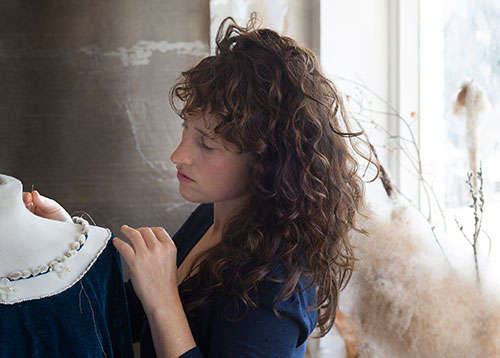
Trained as a designer, photographer and sculptor. She was born in 1978 in the Netherlands in the city of Hoeven and now lives and works in Breda. She graduated in 2000 in Textile Design and Photography from the Academie Voor Beeldende Vorming Tilburg. Her works are an example of how Suzanne masterfully handles the two artistic disciplines.
Contact:
https://www.suzannejongmans.nl/
https://galeriewilms.nl
Selected Solo and Group Exhibitions
2020
– Gasunie solo, NL
– Musée Massay, Tarbes FR
2019
– PAN Amsterdam, Galerie Wilms NL
– Waldorf Astoria Amsterdam NL
– Moving through contrast, (solo) Galerie Wilms NL
– Modest Fashion, Stedelijk Museum Schiedam NL
– CITTÀ DI VELLUTO, Ala, IT
– Kindred Spirits, EESC Brussels BE
– Munch Fabric Start, Munchen DE
2018
– Assignment of 3 artworks commissioned by Valentino / Moncler IT
– “Veiled, Unveiled! The Headscarf, Welt museum Wenen, AU
– PAN Amsterdam, Galerie Wilms
2017
– American embassy, Galerie Wilms
– PAN Amsterdam, Galerie Wilms
– The Duchess, Amsterdam
– SALON/CRAFT, Amsterdam
– Geldrop Museum (solo)
– Miscellaneous II, Venlo Galerie Wilms
2016
– PAN Amsterdam, Galerie Wilms
– Kindred Spirits, (solo) Venlo, Galerie Wilms
2015
– PAN, Galerie Wilms, Amsterdam
– KunstRai, Galerie Wilms, Amsterdam
– De Cacoafabriek, Helmond
– Museum De Kantfabriek, Horst
– Gallery Stephany Hoppen, London
2014
– PAN, Galerie Wilms, Amsterdam
– Mind over Matter , Solo, Galerie Wilms, Venlo
– Museum van Bommel Van Dam, Verzameling Venlo, Venlo
– Art The Hague, Galerie Wilms, The Hague
– A Group show, Gallery Stephanie Hoppen, London
– Amphia Ziekenhuis, Solo, Breda
– KunstRAI, Galerie Wilms, Amsterdam
2013
– Art The Hague, Galerie Wilms, The Hague
– Through a Glass Darkly, Gallery Stephanie Hoppen, London
– LAPADA, Gallery Stephanie Hoppen, London
– KunstRai, Galerie Wilms, Amsterdam
– Museum ’t Oude Slot, Solo, Veldhoven
– Art Realisme, Galerie Wilms, Amsterdam
2012
– KunstRai, Galerie Wilms, Amsterdam
– Art Realisme, Galerie Wilms, Amsterdam
2011
– It’s a Wrap, KOP, Breda
– Suzanne Jongmans, Galerie Wilms, Venlo
– Zomerexpositie, Gemeentemuseum, The Hague
– De Museumwinkel, Galerie Ecker, Breda
– Mail Art Project, Van Abbemuseum, Eindhoven
– Group exhibition, Museum De Krabbedans Eindhoven
2010
– Essent-Foyer, Chassetheater, Breda
– Stik maar, Museum Kempenland, Eindhoven
2007
– Duo exhibition, Galerie Wilms, Venlo
– Identity, KOP, Breda
Publications
– Philosophie magazine -COVER- FR, 2020
– Vogue Italia IT, 2019
– Interni Magazine IT, 2019
– Pf magazine – COVER- NL, 2019
– Vogue DE, 2019
– Style magazine IT, 2019
– De Morgen Magazine, BE, 2019
– Foto Hits, DE, 2019
– Weekend Knack, BE, 2019
– Die Zeit, DE, 2019
– 7, Corriere della Sera IT, 2019
– Le monde des Religions -COVER- FR, 2019
– Elle Decor IT, 2019
– Trennt Magazine, DE, 2019
– Process Magazine -COVER- FR, 2019
– CNN Style, USA, 2019
– Diseno Interior ES, 2019
– Die Welle,documentary in English, German and Spanish
– Guardian, the Observer UK, 2018
– Salzburger Nachrichten CH, 2018
– NTR Zaterdag Matinee NL, 2017
– Selvedge Magazine (58), Paper, scissors, shoot, Sue Steward, 2014, UK
– Palet, Oude Meesters in nieuwe foto’s, Thijs van Kimmenade, 2013, NL
– Eindhovens Dagblad, Portretten met een knipoog, Rob Schoonen, 2013, NL
– Washington Post, Flemish art, back to the future , Maura Judkis, 2012, USA
– ‘Stillevens’ in Tortuga (28) 2011
– Elsevier, Moderne Vermeer, Ingrid van der Chijs, 2010 NL
– BLINK, Suzanne Jongmans, 2005
Prices
1997 Erasmus Price